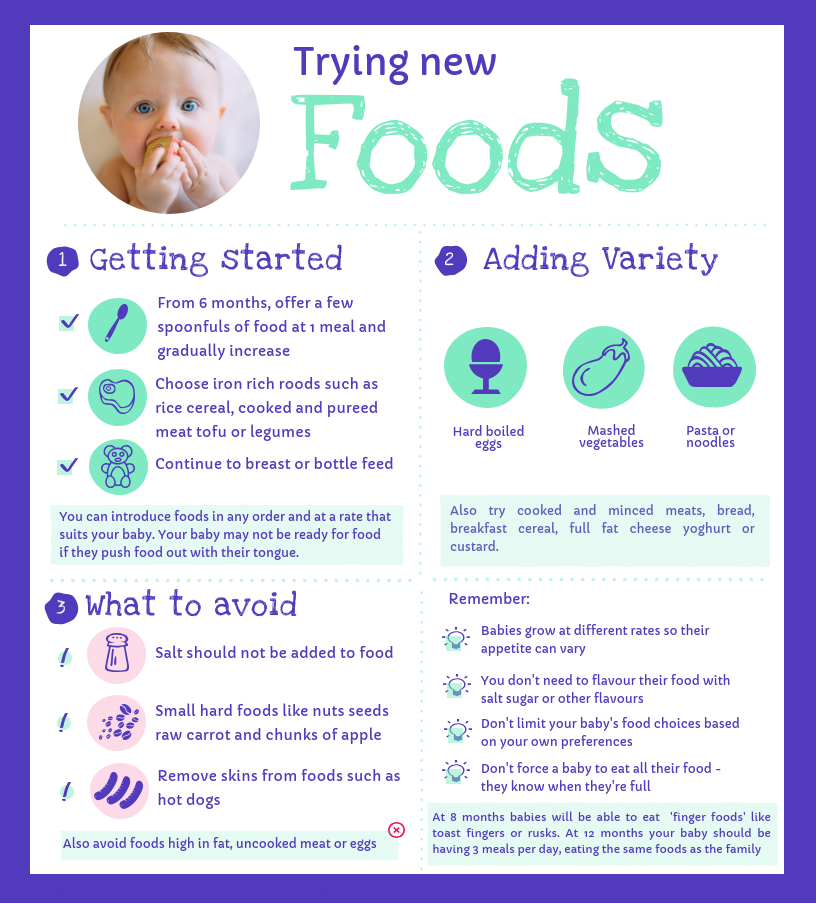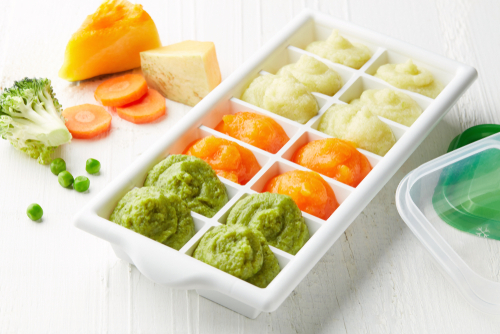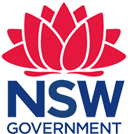
Trying New Foods
For the first 6 months of their life, your baby gets all the nutrition they need from breastmilk or formula. As they continue to grow and develop, they need solid food to meet their nutritional needs.
Best times to try
Your baby will let you know how they feel. When they are hungry, they will get excited when they see food, lean towards you and open their mouth. When they have had enough, you will notice that they turn away, lose interest or push the spoon away. Try the following when introducing new foods:
-
Pick a quiet time, when you and your baby are relaxed, and you have plenty of time
-
Breastfeed (or offer infant formula) first
-
Begin by offering a few teaspoons of food, once a day
-
Offer small amounts of the new food alongside foods they already like
-
If your baby isn’t interested the first time you try with solid food, wait until tomorrow and try again
-
Don’t try to force your baby to finish a portion of food if they don’t want to.
It can take 10-15 tries before they accept a new food. Be patient and keep trying.

Where to start
| Age | Food texture | Foods | Things to avoid |
|---|---|---|---|
| 6 months | Smooth pureed foods |
Add a few teaspoons of these to one meal. Iron-rich foods such as:
|
Don’t add salt to foods Avoid honey – this can cause botulism. Avoid hard foods and whole nuts until 3 years – these are choking hazards |
| 6-7 months | Smooth mashed foods |
|
|
| 8-12 months |
Mashed or chopped foods Finger foods |
|
|
| 9-12 months |
Mashed or chopped foods Finger foods
|
|
|
| 12 + months | Family foods
|
|
|
Add variety so that your baby can try different foods, get different nutrients and develop their mouth and jaw muscles.
You do not need to delay the introduction of eggs, peanuts, wheat or other allergy causing foods. If you have concerns about allergies, talk to your Child and Family Nurse.
Eating family foods
Making your own baby foods can be cheaper than buying prepared foods from the supermarket.
Tips for preparing baby food:
-
Use meat and vegetables you are using to prepare the family meal
-
Remove skin and bones from meat
-
Cook food until it is soft, then mash with a fork
-
Wait until it has stopped steaming before moving food to the fridge
-
Store in a sealed container
-
Label clearly with the date
Plain water, breastmilk or infant formula can be added to puree food if liquid is needed. 
You can keep food in the fridge for two days and up to one month in the freezer.
Freeze pureed baby food in ice cube trays to make portioning easier, spoon into tray and cover with plastic wrap. When ready you can re-heat in the microwave or stove (test temperature before using). After re heating, throw away any leftovers – do not refreeze.
For more information on starting solids see the Pregnancy Birth and Baby website.
Additional Information:
Additional information on solids and meal ideas
Healthy food for babies and toddlers
Related Articles:
Safe Introduction to Common Allergens



